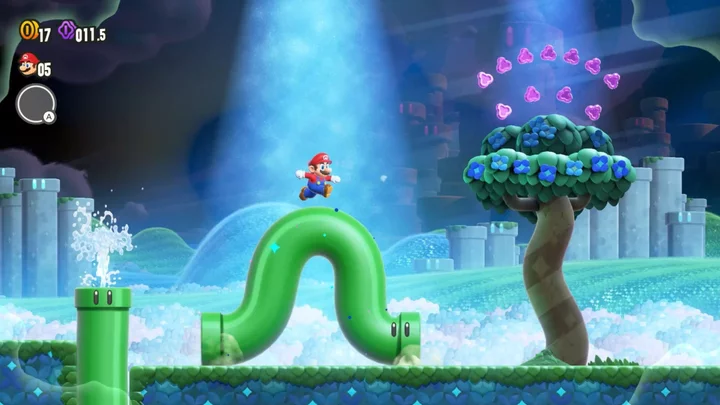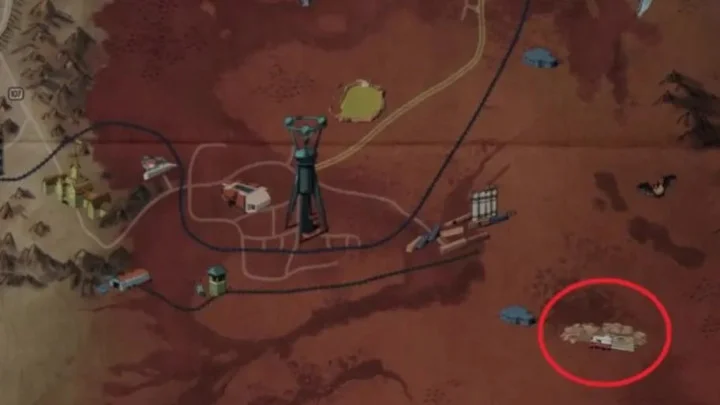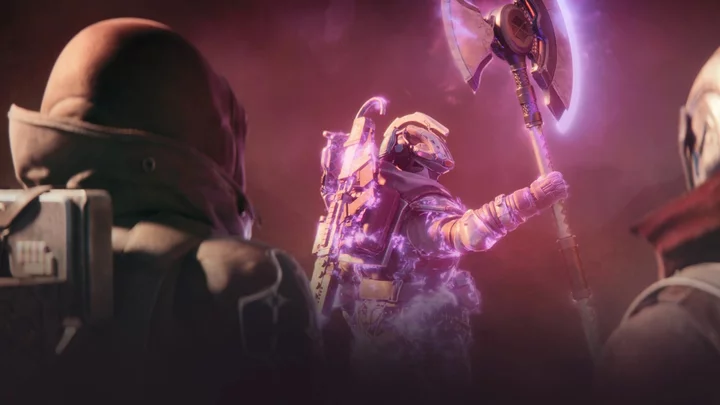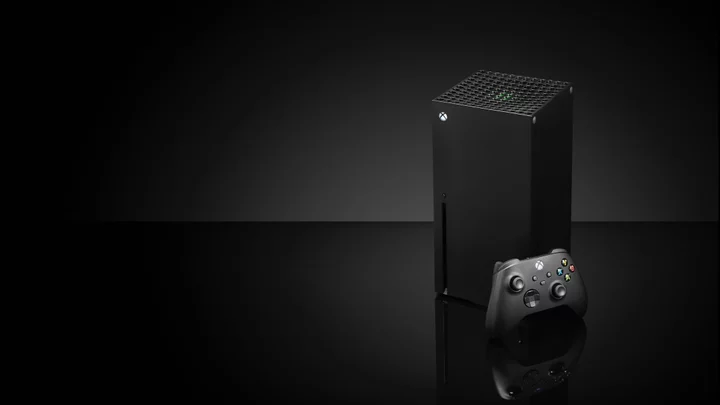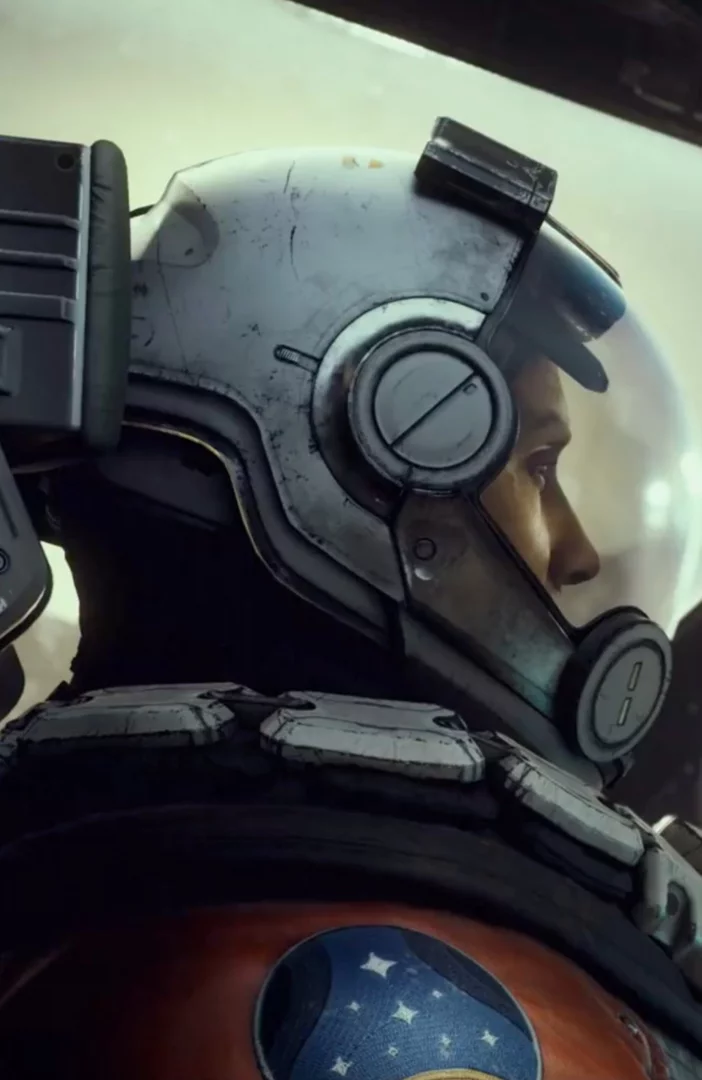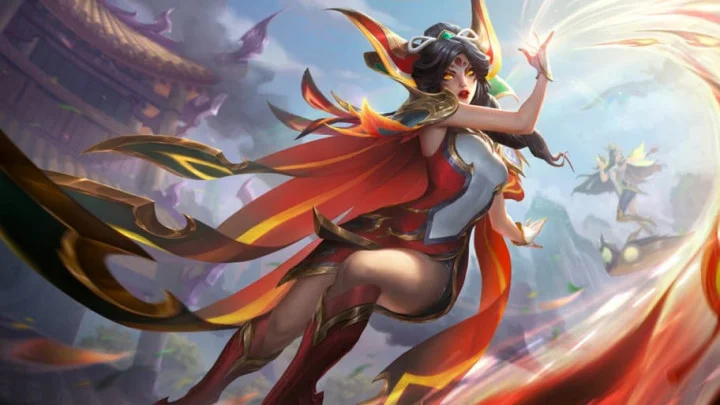New Super Mario Bros. debuted in 2006 and spawned several sequels and ports (the most recent being New Super Mario Bros. U Deluxe). As a result, the “New” in the title of the series doesn't apply anymore. That moniker became Nintendo’s shorthand for Mario’s 2D adventures from the aughts onward, and now it’s time to put it to bed in favor of something actually new. Super Mario Bros. Wonder ($59.99) is Mario’s latest Nintendo Switch adventure, and it looks a whole lot like New Super Mario Bros. U Deluxe. However, a genuinely new Wonder Flower mechanic sets the game apart from its predecessors, throwing big swerves into each stage’s gameplay. The upcoming hop-and-bop game comes out on October 20, but we got a chance to play it at a preview event.
Introducing the Flower Kingdom
Super Mario Bros. Wonder takes place in the Flower Kingdom rather than the Mushroom Kingdom. It’s similar to the latter land, but with flower bud people instead of mushroom people, and magical Wonder Flowers that alter reality. Naturally, Bowser shows up to cause havoc—in this case, by consuming a Wonder Flower and becoming a massive flying castle monster that menaces the land. Mario and company rush to stop him, which involves running through a bunch of stages and reaching the flag at the end of each one.
(Credit: Nintendo)This time around, Mario and company includes more playable characters than in any typical (non-sports or RPG) Mario game yet. You can play as Mario, Luigi, Peach, Daisy, Toads of a few different colors, Yoshis of a few different colors, or Nabbit. This is Daisy’s first playable appearance outside of a sports game, and she’s a good choice if you like the princess aesthetic but don’t love the pink look. The different characters don’t seem to play much differently, at least between the Mario brothers and the princesses.
The Badge System
Super Mario Bros. Wonder's Badge System lets you tweak your preferred character’s movement, and that includes a floating jump. It prompts you to equip a badge when you enter a level, and each badge confers a bonus. Approximately half of the badges are movement boosts, such as the ability to jump and float, jump higher (like in Super Mario Bros. 2), or dash-jump up a wall a short distance. The other badges offer broader bonuses, like having enemies drop coins when you defeat them.
There were 10 badges in the demo, which looks to be roughly half the number that will be in the full game based on the badge selection screen. Badges are unlocked as you play or bought at badge stores using purple coins you collect. It appears that you can only equip one badge in every level, though.
(Credit: Nintendo)Wonder Flower Wackiness
The action is standard 2D Mario and initially resembles the New Super Mario Bros. games. It’s the same side-scrolling, enemy-stomping, block-hitting gameplay the (non-3D) series has excelled at since 1985. There are some new power-ups, like the already revealed Elephant Fruit that turns you into an elephant version of your character that can charge into enemies and obstacles. A power-up similar to the Spin Drill in Super Mario Galaxy 2 gets a 2D debut in Super Mario Bros. Wonder, letting you drill into the ceiling or ground and travel under obstructions. The Fire Flower and Super Star also make their returns, though I didn’t see a flying item like the Raccoon Leaf or Cape Feather in the demo.
(Credit: Nintendo)The big change is the Wonder Flower. It’s not a power-up, but rather a reality-altering object that drastically changes the level in some wild way. Each stage has a unique Wonder Flower gimmick, and those gimmicks vary more than the differences between any two stages in any other 2D Mario title.
In one level, touching the Wonder Flower makes the pipes that Mario ran across start moving, rolling up and down like waves and crawling forward like worms. It makes maneuvering tricky, but it also let me reach higher spots on the stage.
In another level, Mario warps to a vertical area and turns into a balloon version of the character, like the P-Balloon power-up in Super Mario World. Getting hit by enemies pops Mario and made him fall, so I had to collect Super Stars that the stage generously doled out to become invincible and avoid taking damage.
(Credit: Nintendo)The Wonder Flower effect lasts until you collect a Wonder Seed. This keeps the gimmicks from staying around too long and making the game feel like something other than a 2D Mario title. Wonder Seeds seem to be the main item for progression; you’re awarded one upon completing a level, and you get another by going through a Wonder Flower section. The Wonder Flower is clearly the core of the action here, and what makes the game distinct from the New Super Mario Bros. series. There’s tremendous potential for variety.
Super Mario Bros. Wonder is the best-looking 2D Mario release yet, with characters that move fluidly and act with much more expression. The graphics are bright and colorful, and the Wonder Flower effects inject visual diversity into each stage. That said, casual players may think it looks a lot like New Super Mario Bros. U Deluxe.
(Credit: Nintendo)Multiplayer Modes
Side-scrolling Mario games have had cooperative multiplayer since New Super Mario Bros. Wii. Although fun, they’ve also had the potential to be hilariously toxic play sessions that devolve into tormenting your friends. For example, you can use the Wii U gamepad to create platforms in New Super Mario Bros. U, ostensibly to help fellow players reach higher levels. However, you can also do that to troll other players by making them bump their characters' heads during jumps and fall into pits. Add characters getting in each other's way and a scrolling screen that causes people lagging behind to die and respawn, and it's a frustrating (though funny) way to play.
Super Mario Bros. Wonder makes massive multiplayer advancements through a simple change. Characters now phase through each other instead of bumping into one another. They interact with the same enemies, items, and objects, but they can’t knock each other into hazards. That alone makes a huge difference in the cooperative experience. You can’t jump on each other to boost up higher, but that’s a minor trade-off for removing one of the biggest sources of frustration when playing with friends. Screen scrolling is still an issue, though—everyone needs to keep at the same pace, or players who lag behind will be dragged forward as floating ghosts.
This is also the first main series 2D Mario game with online co-op play (Super Mario 3D World Deluxe and Super Mario Maker 2 both had it). You can jump into a room with friends from across the world and enjoy the same gameplay you would experience sitting together on a couch. The demo included a level with players on other Switches (in the same room and on the same network) and we didn't experience any hiccups. The process of getting together with friends, as well as browsing and managing rooms, isn’t entirely clear yet. Hopefully, the interface won’t be too obtuse. As with almost all Nintendo games with online elements, don’t get your hopes up for voice chat.
(Credit: Nintendo)Packed With Potential
Super Mario Bros. Wonder is shaping up to be a terrific 2D Mario game. To be fair, most side-scrolling Mario games are highly enjoyable. However, there's one question yet to be answered: Can Wonder establish itself as a unique title that doesn't feel like just another New Super Mario Bros. game? The Wonder Flower effects shake up the old formula a bit, and just how creative Nintendo gets with them will determine Wonder’s identity. We'll see how it plays out when the game drops on October 20, so make sure to check back for our full review.
For in-depth video game talk, visit PCMag's Pop-Off YouTube channel.

